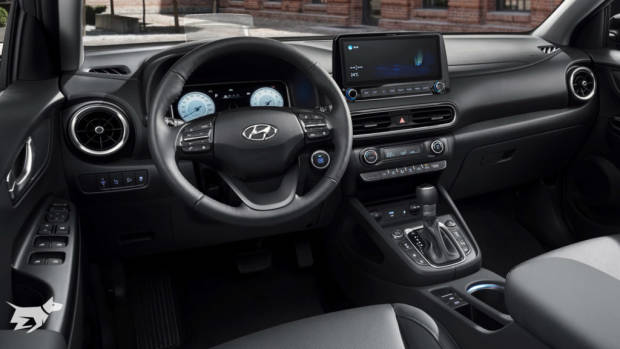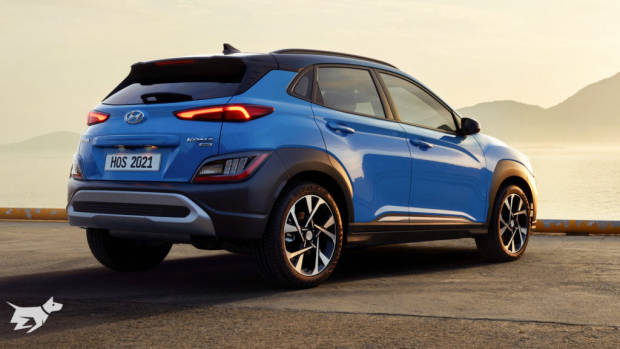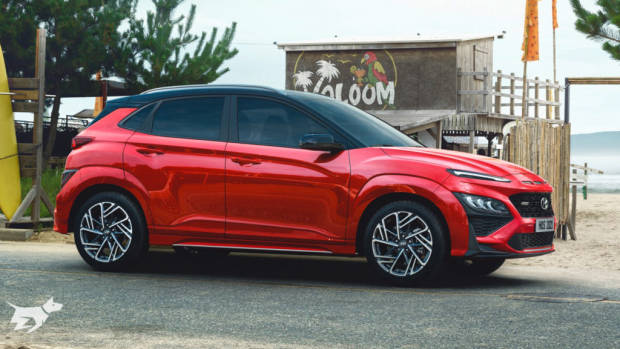-
Car Reviews
- All reviews
- Midsize SUVs
- Small cars
- Utes
- Small SUVs
- Large SUVs
- Large cars
- Sports SUVs
- Sports cars
- Vans
Latest reviews
- Car News
-
Car Comparisons
Latest comparisons
- Chasing Deals
A comprehensive mid-life facelift to the 2021 Hyundai Kona small SUV was revealed this morning, with a host of visual and technological changes accompanied by the addition of a dedicated Kona N-Line grade.
The updated Kona will arrive in Australia in late 2020, while for the first time, a series-parallel Kona Hybrid model will come to our market in early 2021. The new look will also be applied to the Kona Electric, in time.
The new Kona Hybrid, which produces 103kW of power by combining a 1.6-litre direct-injected petrol engine with a 32kW electric motor and 1.56kWh lithium polymer battery, will compete directly with the Toyota C-HR Hybrid in the fuel-sipping small SUV stakes.
Naturally, the most visible change to the 2021 Hyundai Kona is visual in nature, with the Korean manufacturer noting the switch to a “sharper, cleaner, more harmonious front end”. The split headlight cluster from the original Kona remains, but the lower assembly is more tightly integrated with a contrasting diffuser, while the grille has been tidied up. Quirky vents above the grille ensure the Kona still doesn’t blend in to the crowd, though.
As usual for a facelift, there’s a shopping list of changes, including new alloy wheel designs, new taillight graphics, the addition of five new colours and a contrast-tone rear bumper – but it is the new front end, and the 40mm increase in length, that will make the most impact. The lengthened shape makes for a bigger boot and more rear legroom, Hyundai says.
There will also be a new 2021 Hyundai Kona N-Line model coming to Australia, likely matched exclusively to a more powerful 1.6-litre turbocharged petrol four-cylinder in our market. Currently, that engine is an option on the Kona, producing 130kW. In 2021, the engine, which switches to Hyundai’s new Smartstream tech, produces 145kW and will be available with front wheel drive or all wheel drive.
In Europe, the other engine options take in a 100kW 1.6-litre turbo diesel four-cylinder with a new 48-volt mild hybrid system, plus a mild-hybrid one litre turbocharged three-cylinder with a six-speed manual.
However, it’s more likely that the majority of the Kona range in Australia will continue to be powered by a 2.0-litre naturally aspirated petrol four-cylinder producing 110kW of power.
As well as their sportier engine, the new Kona N-Line – which hints at the future availability of a hypothetical full-fat Kona N – will be distinguished by its more athletic design.
Unlike the standard Kona, the N-Line will feature body-coloured wheel arch extensions, while the front skid plate will be replaced by an “N-style” aero lip with corner fins. Those fins will be echoed at the rear of the car.
Kona N-Lines will also sport a distinct 18-inch wheel design, along with twin tailpipes, an N-Line interior with sports seats, metal pedals, and the N logo placed on the shifter and seatback.
Inside, the Kona picks up additional tech in the form of a 10.25-inch digital driver display, while a second 10.25-inch central infotainment screen will be available. The standard central screen will continue to measure eight inches, at least overseas.
In a bold move, the new Kona will also pick up wireless Apple CarPlay and wireless Android Auto, while the system will have the capability to display split-screen views on the 10.25-inch screen while holding multiple Bluetooth connections.
A new perforated khaki leather hue will be on the table, alongside black and beige leather and a new houndstooth fabric. An electric parking brake replaces the outgoing mechanical lever, while Hyundai notes that the materials inside will display “a higher level of quality and refinement.”
On the safety front, the Kona has been updated to offer cyclist detection on top of the existing vehicle and pedestrian detection for the AEB system. The blind spot monitoring has been beefed up to include differential braking to bump you away from a side-swipe crash. There’s also leading-vehicle move-off alert, plus braking capability for the rear cross traffic alert. Finally, a door-exit warning and rear seat alert complete the picture.
We expect a shallow bump to the Hyundai Kona’s Australian pricing, which currently spans $22,400 to $37,600, to reflect the new features when the vehicle arrives locally in late 2020.
Latest news
About Chasing cars
Chasing Cars reviews are 100% independent.
Because we are powered by Budget Direct Insurance, we don’t receive advertising or sales revenue from car manufacturers.
We’re truly independent – giving you Australia’s best car reviews.


